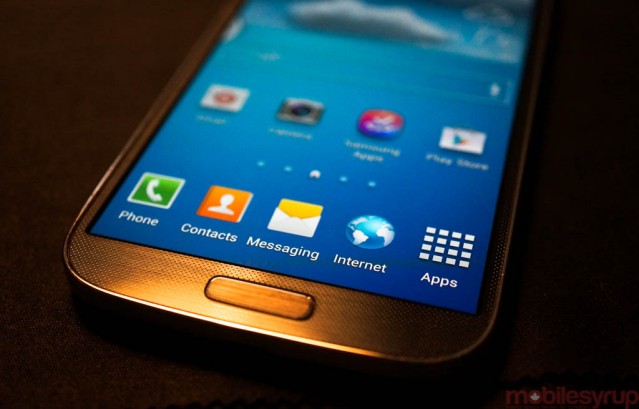
After many months of suffering, Canadian Samsung Galaxy S4 and Galaxy Note 3 owners received an update to Android 4.4.2, bringing a number of new features and performance improvements. But the update is not entirely good news, especially for those people who rely on external storage via microSD.
While this guide mainly applies to the new Samsung update, some aspects apply to all devices running Android 4.4 KitKat. Let’s dive right in.
1. MicroSD cards are persona non grata
While Android 4.4 still supports the use of microSD cards, Google made an important and potentially alarming change to the way apps can use the extra storage.
In previous versions of Android, apps could create their own directories anywhere on the available microSD storage, splitting files into multiple destinations. In KitKat, Google has, for logistical and security reasons, cordoned off app files to a single directory of the SD card. BeyondPod, a popular free podcast app for Android, describes it thusly:
“While 3rd party applications are generally not allowed to write to the External SD card on KitKat, they are still allowed to write to a special, ‘application specific’, folder on the External SD card. Using this ‘application specific’ folder, it is possible to still use the external SD card for downloading and storing episodes. The only caveat is that if you uninstall BeyondPod, everything that is stored in the “application specific” folder (feeds, settings and downloaded episodes) WILL BE DELETED.” (my emphasis)
While other devices like the Nexus 4/5, Moto X and HTC One have already been updated to Android 4.4, the Samsung Galaxy S4 and Note 3 are the first big-name carrier-sold devices with a microSD card to receive the update. Android Central’s Jerry Hildenbrand has a good primer on the issue, and ends his article with this pithy warning:
“First off, you stop and think before you take any update to KitKat. Any apps installed to the SD card will lose their data when you update and need re-installed, and some of the apps you use probably will stop working because they have not been updated. The good news is that other apps have been updated — PocketCasts, for example — so you get to try all new apps.
You could also never update to KitKat, which I see a lot of people claiming they have planned. I think that’s a bit crazy, but it is an option and it will keep things working like they always have — both the good and the bad — in regards to your external storage.
Or you can install a custom ROM that “fixes” the issue. It’s a fairly easy thing to change, but the folks who make your phone aren’t allowed to “fix” it or they can’t retain their Google certification for Google Play and the rest of Google’s apps.”
In other words, if you’ve installed a game to your SD card, it will likely not work properly until the developer issues a fix. If you uninstall that game as a result and try to re-install it, unless the developer uses Play Games to sync your progress to the cloud, you’ll lose the progress. It’s messy, but it’s a good foundation for secure usage of external storage going forward: because developers can only write to one folder of an SD card, malicious software can be contained and potentially eliminated without infecting your entire phone (and potentially others).
2. Updating will break root (but there’s a fix)
As with most updates, Android 4.4.2 will break root for GS4 and GN3 users. This is easily fixable, but a new version of Chainfire’s excellent CF-Root app is needed to do so.
3. Rooting your device will trigger Knox and potentially void your warranty
Rooting Android 4.4.2 on the GS4 and GN3 will trigger Samsung’s Knox security to warn you that your phone is unsecured. As a result of this, Samsung may no longer honour the phone’s warranty, and its bootloader has been altered.
This was detailed when the Galaxy Note 3 was released last October but it seems like the eFuse trigger is now present on the Galaxy S4 as well. Keep this in mind when rooting your device, as it could cost you the option of getting a replacement phone if something goes wrong.
4. Don’t expect much else to change
Samsung has always kept its TouchWIZ UI fairly consistent through the updates of its various flagships. Aside from the addition of white text in the notification bar (which is a prerequisite for all OEMs upgrading to KitKat, not just Samsung), the Android 4.4.2 update looks remarkably similar to that of Android 4.3.
Of course, KitKat itself adds a number of performance improvements, along with transparency and Immersive Mode, but those are less prevalent on devices that have capacitive buttons like the Galaxy S4 and Note 3.
—
Did we miss anything important? Let us know and we’ll add it to the list.
MobileSyrup may earn a commission from purchases made via our links, which helps fund the journalism we provide free on our website. These links do not influence our editorial content. Support us here.


